As email marketers, our goal is to continuously grow our list of subscribers who are receiving our communications on a regular basis. However, it is also just as important to ensure that our list of subscribers is clean and healthy. Some of the top ways to ensure you are maintaining a healthy list is by performing regular list cleanse scrubs to identify any potential high-risk email addresses, as well as to practice audience segmentation to ensure you are only sending to contacts who fall within a certain engagement threshold.
However, there is another way to ensure you are maintaining a healthy list that I think gets overlooked too often, and that is to ensure you have a seamless opt-out process. Having a clear and user friendly opt-out process should be at the top of your list when it comes to your overall email marketing plan. Not having a straightforward way for your contacts to unsubscribe whenever they would like can have serious consequences on your brand and domain reputation. Not to mention possible legal consequences.
What’s Opt Out Mean?
With email, you can opt in—meaning you give the brand permission to send you emails—or you can opt out—meaning you are revoking that permission. You can learn more about the differences here, but in short, an opt out strategy is one that focuses on the experience your recipients have with your brand if they decide they no longer want to receive your emails. Why would you want to focus your energy on letting people go? That’s exactly what we’ll cover below.
The Basics – Legal Stuff
Let’s start with the basics. I would guess that most of us know this, but I will just go ahead and throw it out there to be sure we are all on the same page. If you are a person or business sending out commercial emails, then you are required by law to comply with the CAN-SPAM Act. And part of the CAN-SPAM requirements is that you have an opt-out mechanism or a way for recipients to opt out of receiving future communications from you. Additionally, requests to opt out must be honored promptly. LexisNexis states that e-mails must clearly explain how the recipient can opt out of receiving future commercial messages from the sender via one of the following opt-out mechanisms:
- A functional return e-mail address
- An Internet-based mechanism (such as an opt-out link)
Per the FTC website, each separate email in violation of the CAN-SPAM Act is subject to penalties of up to $43,280.
Now we also have to take GDPR and CCPA into consideration. With both laws, you are not only required to make the opt-out process super easy but also may have to comply with the “right to forget” the contact altogether. In short, you should have a plan not just to opt out contacts—you need to know what steps should be taken if they additionally request to be anonymized in your marketing automation system (and other databases, as well). Failure to do so could lead to massive fines and an inbox full of nasty responses.
Opt-Out Best Practices
Make your opt-out process obvious
It shouldn’t take a private investigator for someone to figure out how to unsubscribe from your emails. This is typically accomplished by including a link and possibly some verbiage in the footer of your email where contacts can go to easily unsubscribe from receiving any or all of your email communications. While you don’t necessarily want your unsubscribe link to stick out so much that it catches people’s attention, you still want it to be easily located. I really like how Bath & Body Works includes two subtle unsubscribe links.
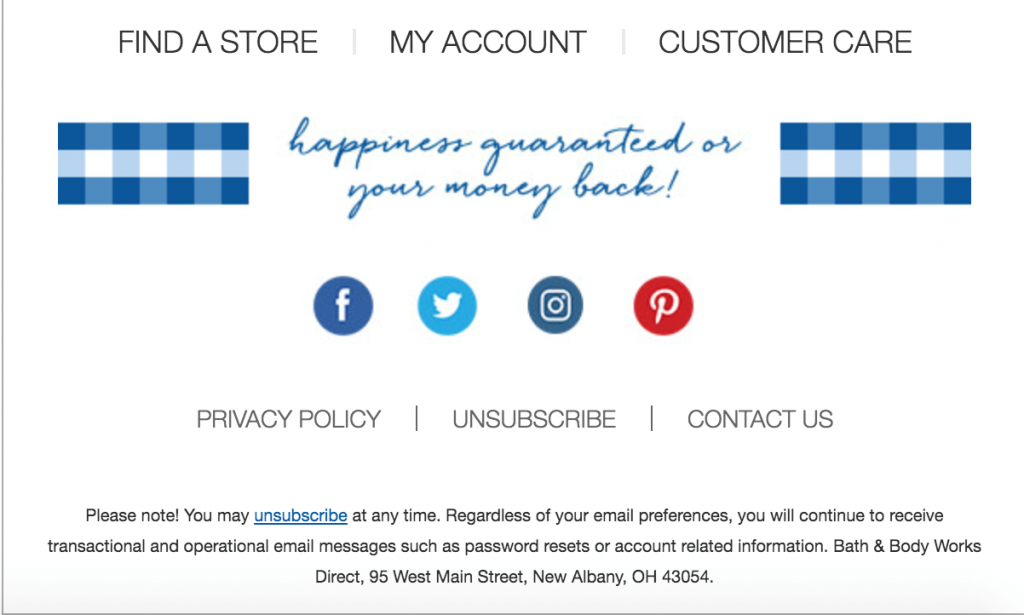
You might also incorporate your brand voice here as well. It doesn’t have to just say “unsubscribe”! Check out this copy from one of our emfluence emails, for example:
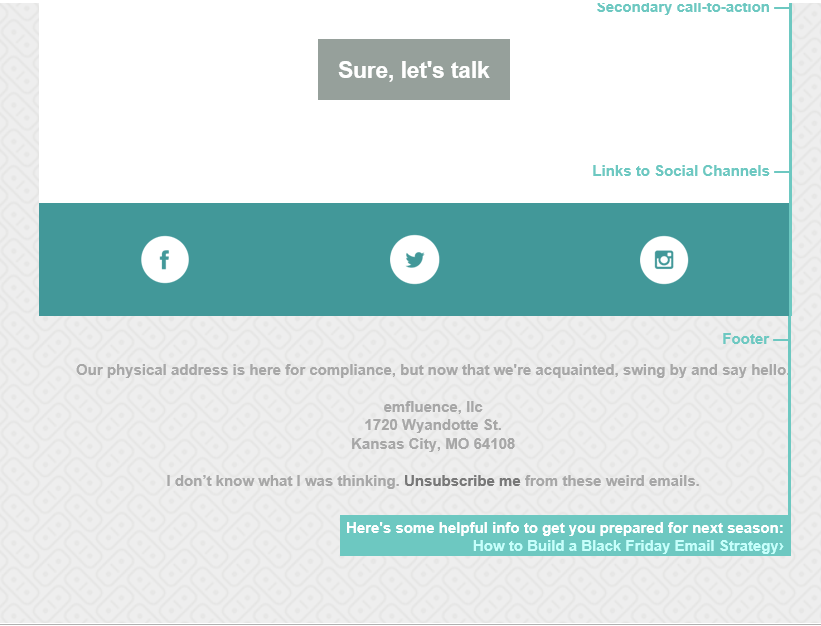
Include a Preference Center
A preference center is a great way to allow contacts to customize their communication preferences. Typically, preference centers allow contacts to update certain personal information, as well as the types of emails they would like to receive and how frequently they would like to receive communications from you. Your preference center page should also include a way for contacts to unsubscribe from all of your emails, but the beauty of a preference center versus an auto-unsubscribe from everything is that your contacts can choose to stay opted in to certain types of emails while no longer receiving other types of emails.
Zillow does a great job in the footer of their email including options to both unsubscribe or update your preferences.
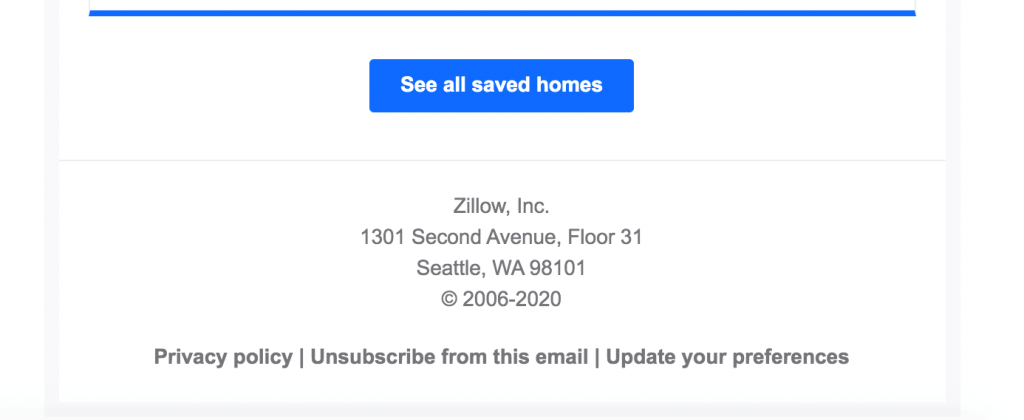
Take Quick Action
Okay, so this one might just be a pet peeve, but nothing annoys me more than when I unsubscribe from an email and they tell me it may take x amount of days before this update takes effect. The reason people unsubscribe is because they no longer want to receive communications from you so the sooner you can remove them from your list, the better. With that being said, per CAN-SPAM guidelines “you must honor a recipient’s opt-out request within 10 business days.”
Keep an Eye on the Size of your Email
You may be asking yourself what does the size of your email have to do with opting out? The reason why email size may impact your overall opt-out strategy is because Gmail does this super fun thing where it clips the bottom part of your message if it has exceeded 102KB. Recipients will have to click the ‘view entire message’ option in order to see the full content of your email, including your unsubscribe options if they are located in the footer of the email. Not only is this a poor user experience, but it can also lead to an increase in your spam rates since recipients may not be able to locate your unsubscribe link.
It didn’t take me long to find an example of an email where Gmail has clipped the message.
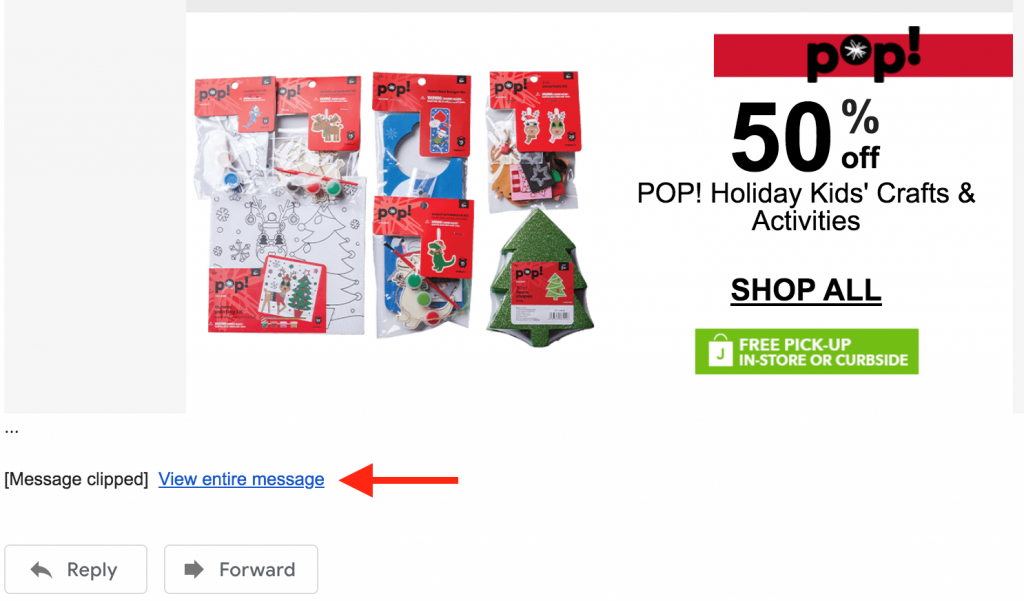
Learn from your Unsubscribes
Contacts are going to unsubscribe from your emails – it’s inevitable. However, it doesn’t have to be a negative thing. When contacts are unsubscribing from your email, take this as an opportunity to learn and improve your overall email strategy moving forward. Don’t be afraid to ask contacts why they are unsubscribing. There are a ton of different reasons why someone may choose to unsubscribe from your emails, so any insight into why they are unsubscribing can help identify any changes or optimizations that you need to make to your email marketing strategy. Love By Luna did a great job of this by including a short and simple survey in their opt-out process that asks people to let them know why they have unsubscribed.
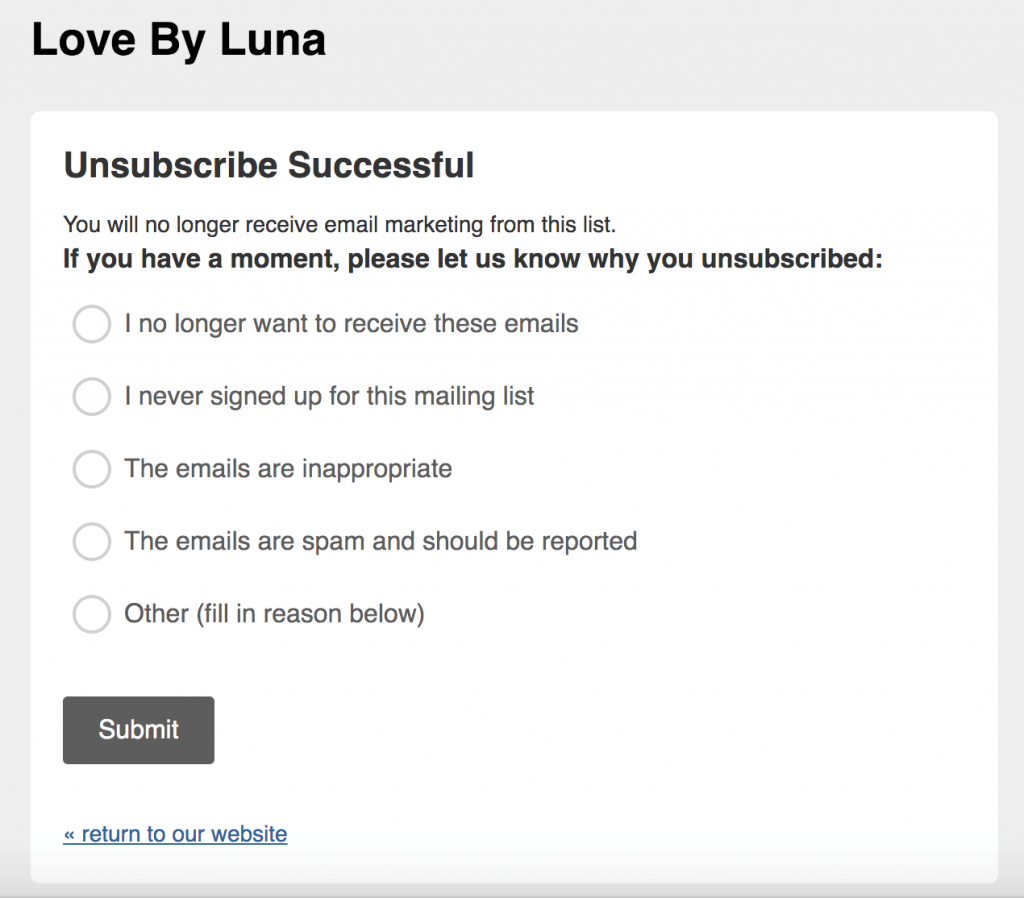
And there you have it – you should now be well on your way to creating a seamless opt-out process to support your larger email marketing strategy!


I didn’t do that and I want to keep my SUBSCRIPTION !!!!. I don’t know how this information occurred.
Hi Andrea! Do you mean you accidentally unsubscribed from our emails?